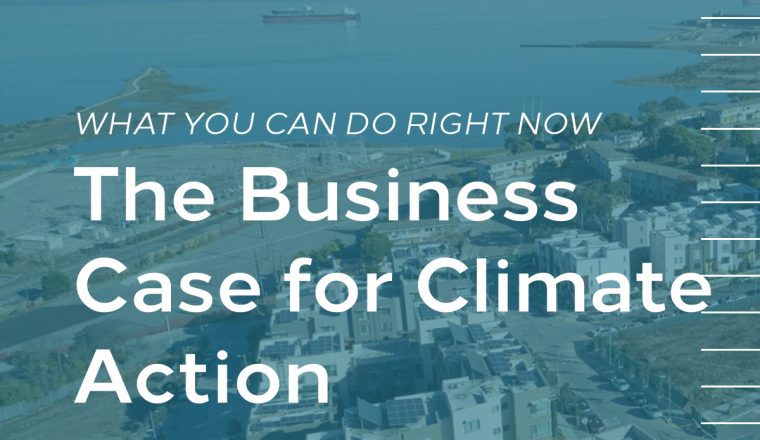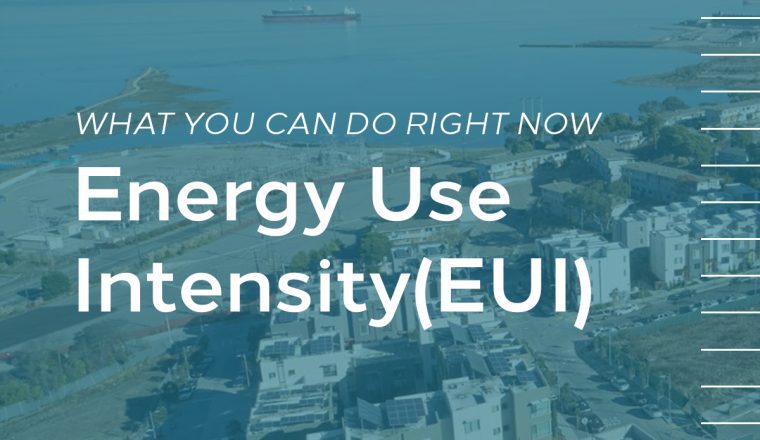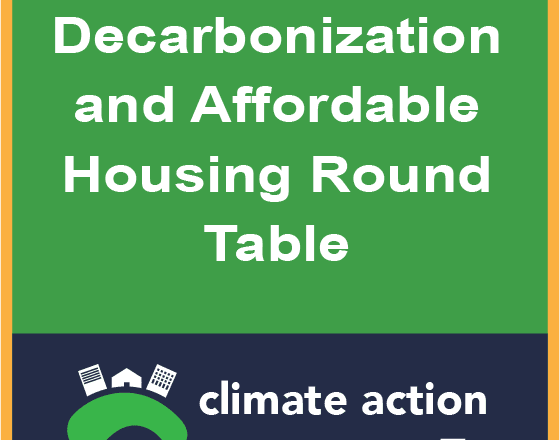By: Henry Siegel, FAIA, Jonathan Feldman, AIA and William Leddy, FAIA
MAKING THE CASE FOR CLIMATE ACTION
Most architects understand the enormous impact our work has on the environment: more than 25% of carbon emissions in California[1] (closer to 40% nationally) come from the construction and operation of buildings, and the resulting environmental impacts are enormous. Our clients and the agencies who review our projects may not be aware of these impacts and the importance and urgency of decarbonizing the building sector. This article is designed to show how architectural practice is changing to meet this demand and make the case that zero carbon design is not just an environmental imperative, it’s also good for business.
Where are our clients starting from? How important are the environmental impacts of their projects to them? How do we make the case for building decarbonization — not just the environmental case but the business case? Let’s start with the big picture.
THE BIG PICTURE
Societal Costs
The construction and operation of buildings represent one of the largest sources of greenhouse gas emissions, so our actions are a large and direct cause of climate change with its many negative outcomes: from rising temperatures, rising sea level, and increased air pollution to droughts, wildfires, and tornados, to threats to our food security. The dire findings of the October 2018 UN Intergovernmental Panel on Climate Change (IPCC) report, “Global Warming of +1.5˚C”[2], followed in November by the US Government’s “Fourth National Climate Assessment”[3], confirm that inaction is not a viable choice. Climate change is here, and the impacts are accelerating faster than previously predicted, as the recent record breaking wildfires throughout the west bring home to us all. The IPCC report concludes that avoiding catastrophic climate impacts requires “a rapid and far-reaching transformation of human civilization at a magnitude that’s never happened before.”
While the cost and complexity of combating these challenges now may be considerable, both will be significantly greater if we wait. Investments in resilience now will be far less expensive than reacting to change later; by acting sooner to decarbonize our industry, we can reduce future environmental impacts and uncertainty – especially for more vulnerable populations – as well as future costs.[4]
And, there is great opportunity as well. Rapid technological change is making low carbon design the lowest cost option for new buildings. Architects can now make the case that we can save money for our clients — construction cost and operating cost — and increase our clients’ return on investment while also lowering the carbon footprint of their projects.
For new construction, “doing well” and “doing good” are in perfect alignment. The transition to a post-carbon building sector and economy isn’t something to be feared: it’s an extraordinary business opportunity to be embraced.
The Political Climate: Legislation, Reach Codes and Building Code Updates
The State of California is moving rapidly to reduce carbon emissions statewide over the coming decades. The Legislature has established decarbonization goals and is drafting a host of policies growing out of these goals that will deeply affect the construction industry, and our day-to-day practices, in a wide variety of ways. Senate Bill 1477 calls on the California Public Utilities Commission (CPUC) to develop, in consultation with the California Energy Commission (CEC), two programs (BUILD and TECH) aimed at reducing greenhouse gas emissions associated with buildings. Assembly Bill 3232 calls on the Energy Commission, in consultation with the CPUC and other state agencies, to develop an assessment by next year of the feasibility of reducing the greenhouse gas emissions of California’s buildings 40 percent below 1990 levels by 2030.
Many public agencies are studying how to quickly reduce building sector carbon emissions and are concluding that eliminating fossil fuel from buildings, requiring that new buildings use all electric systems, is the most promising way forward:
- The California Public Utilities Commission has launched an effort to transition the state away from the use of fossil fuel in buildings.[5][6]
- “Building electrification is widely recognized as a low-cost method to achieve greenhouse gas emissions reductions. It is also an essential strategy for reducing air pollution and safeguarding public health, especially in California, where buildings contribute five times more air pollution than power plants.”[7]
- A State of California study, tasked with evaluating paths to an 80% reduction from 1990 levels by 2050, concludes that “building electrification is likely to be a lower-cost, lower-risk long-term strategy compared to renewable natural gas.” California policies and laws will rapidly be evolving in this direction.[8]
Action at the local level is happening even more quickly. Many county and city jurisdictions have passed electrification “reach codes,” with the goal to meet decarbonization goals even more quickly than state mandates. In just 12 months, 35 cities representing nearly 10% of the state’s population have committed to gas-free new construction – with more cities and counties joining all the time.[9] [10] Over 40 other cities and counties have similar reach codes in the works.
The 2022 Building Code, now under consideration and enacted as of January 1, 2023, will likely include requirements and/or incentives for all electric buildings. AIA also supports the adoption of the ZERO Code for California[11], developed by Architecture 2030 and Charles Eley, FAIA, which provides a regulatory overlay of existing California building codes that, if adopted, would lead to accelerated de-carbonization.
These are promising developments on multiple fronts. It is important that as a profession we stay informed about these political efforts, actively support their implementation, and encourage our clients to do the same.
Incentives
Tax incentives, carbon credits and other innovative financing mechanisms are under continuing development to make deep energy retrofits of existing buildings and new low-carbon building systems accessible to everyone. Government tax incentives for solar energy adoption have already been a major factor in the success of the solar industry, and these will likely continue. Meanwhile, many other programs are being developed around the country to democratize clean energy, reduce energy poverty, and expand access and affordability of resource efficient homes to low and moderate-income families. In California, many local and regional agencies, like the City of Los Angeles and the Los Angeles Department of Water and Power (LADWP)[12] are providing incentives for energy retrofits for low-income tenants and affordable housing developers. Since 2012 Fannie Mae[13] has offered the Multifamily Green Bond program that provides innovative financing solutions for energy and water efficiency wrapped into traditional mortgage lending. New and retrofitted green multifamily buildings under this program are estimated to have already contributed $7.2 billion in worker’s income while reducing water use by 5.9 billion gallons and greenhouse emissions by 287,000 metric tons. As the zero carbon economy expands, financial institutions will continue to find innovative ways to serve it, and architects will benefit greatly from the many projects this financing will support.
Job Creation
The transition to a decarbonized building sector and economy will create millions of new jobs. (100,000 in California alone[14]) The UN’s International Labor Organization[15] recently predicted that the green economy will generate 18 million new jobs globally by 2030. Influential global market analysts FTSE Russel[16] reported in 2018 that the value of the US green economy is expected to grow from $4 trillion today to $90 trillion by 2030. And according to a Bloomberg[17] analysis of US Bureau of Labor Statistics employment projections, over the next decade “jobs for solar panel installers and wind turbine technicians will grow twice as fast as any other occupation.” [18]
The Changing Power Grid and the Decreasing Role of Gas
The electric grid in California is rapidly reducing its carbon footprint – – almost two thirds of California’s electricity came from zero carbon sources in 2019. The cost of building and operating new solar and wind power capacity has fallen below the cost of operating existing coal powered utilities.[19]
Will the grid be up to the task of electrification? California’s peak electric demand is due to air-conditioning in the summer. Most of the increase load due to building electrification comes in winter improving the utilization rate of the electric grid, which should lower cost.[20]
PG&E, the largest investor-owned public utility in California, supports electrification reach codes and the elimination of fossil fuel combustion in buildings. PG&E doesn’t want to invest in new gas infrastructure because it understands that all-electric buildings will be the new standard; and the company realizes that its existing gas infrastructure is on the way to becoming a “stranded asset,” an investment that will eventually provide no return. While most utilities in the state, including PG&E, the Sacramento Municipal Utility District (SMUD) and Southern California Edison (SCE), support electrification, some, like SoCalGas, are fighting it. Gas is its entire business, of course, and it has the support of trades that install gas infrastructure. The transition away from natural gas combustion in buildings will take decades so workers who want to can retire in those jobs, while others can be retrained and transitioned to well-paying green jobs.
The cost of maintaining aging gas infrastructure is already increasing dramatically as utilities undertake substantial safety upgrades following a number of major disasters in the past decade, including the major leak at Aliso Canyon and explosions in San Bruno and San Francisco. And as California continues to cut fossil fuel use, demand for gas is in decline, and costs will continue to rise. According to research from E3,[21] gas rates could increase from about $1.50 per therm today to as much as $19 per therm by 2050.[22]
Injustice of Climate Change
In this moment when the US is wrestling with racism and economic injustice, the communities that suffer most from the systemic manifestations of these issues are also disproportionately suffering from the physical and economic consequences of climate change. To further this injustice, many of these same communities have a smaller environmental footprint and are contributing to climate change the least.[23] As we advance our efforts to address climate change and limit emissions that cause warming, we must widen our understanding of the relevant issues in all communities.
We know that climate change will likely lead to more frequent, more severe, and longer heat waves during summer months and this will be exacerbated in lower income neighborhoods that generally are less shaded and more subject to urban heat island effects. There is growing evidence that GDP will also be reduced by a global average of 5.6% due to, among other causes, increased spending on energy needed for cooling.[24] Heat waves, wildfires, and other extreme weather events caused by climate change have also cost the U.S. billions of dollars[25] for additional health care, and the need, as we have seen in the COVID pandemic, is most acute for already vulnerable, lower income populations .[26]
We also know that we cannot meet statewide carbon reduction goals without making sure that energy retrofits and other low carbon design strategies are made available to all communities. And making these programs available to all has many other benefits. “ Electrification provides low-income communities access to major benefits such as cleaner air, healthier homes, good jobs and empowered workers, and greater access to affordable clean energy and energy efficiency to reduce monthly energy bills, while helping the state meet its climate goals, including a net-zero carbon economy and 100 percent clean electricity by 2045.”[27] HVAC heat pumps deliver utility bill savings for both retrofit and new construction of up to $600 per year compared to gas appliances. Decarbonizing homes not only reduces pollution and helps achieve state climate goals, it can also support equity policy goals. “For example, heat pump systems provide a climate adaptation advantage, because they provide both air conditioning and heating. Air conditioning, along with better building design and more resilient communities, can help protect public health in low-income and vulnerable communities as heat waves become more severe under climate change.”[28]
Recently, we have seen numerous affordable housing projects that meet high standards for zero carbon design, demonstrating that projects that must meet stringent cost targets can still achieve ambitious performance and emissions standards. Increasingly, developers are proving that they are willing to consider the triple bottom line, with mutual benefits to people, planet, and profits.
THE DIRECT BENEFITS
The benefits of making the transition to all-electric, zero carbon buildings, and doing it now, are compelling. Zero carbon buildings will save money. Building and business owners will realize more stable and resilient operations as well as first cost and long-term cost reductions for energy and utilities. Zero carbon buildings are more resilient, energy independent and safe. And if we act quickly and stave off the most significant fall-out from a changing climate, all of our businesses will benefit from the increased physical and economic stability.
What Will it Cost Me?
While many architects can make a well-reasoned case for the environmental benefits of building decarbonization, our clients still need to understand the practical benefits and implications, such as:
- What will this cost up front?
- How will operating costs change?
- How will this affect permitting?
- How will it affect the building users?
- How will it affect value, financing, sales, leasing, resale?
New Buildings
For new buildings, we have persuasive answers to all these questions now. Construction costs, operating costs, and carbon emissions can all be lowered by designing all electric buildings. These benefits are made possible by many recent developments, including new higher efficiency heat pump technology for space and water heating. Heat pump equipment is now more efficient, has lower emissions, and costs less to operate than comparable gas equipment.[29]
- Construction cost will decrease;[30] no gas piping will be installed on sites and or in buildings, no gas service or meter required. The cost differential of electrical equipment replacing what would have been gas equipment is negligible, and many utilities and Community Choice Aggregators (CCAs)[31] provide rebates for using electric equipment rather than gas.[32]
- Operating costs are also reduced since new heat pump equipment is now many times more efficient than comparable gas equipment.[33]
- Since elimination of fossil fuel combustion in buildings is widely recognized as an important strategy in meeting California carbon emission targets, all electric buildings will quickly become the easiest way to gain agency approvals.
- Elimination of fossil fuel combustion in buildings removes a prime source of toxicity in indoor environments and a dangerous source of combustion during fires. All electric buildings are safer and better for occupant health. Recent studies point to increased awareness of the negative health effects of cooking with gas.[34]
- Carbon neutral buildings cost less to build, are less expensive to operate, protect occupant health, and are safer and more resilient. The result: increased building value.
- With battery back-up, all electric systems are more resilient because they can operate, at least partially, during power outages.[35]
Existing Buildings
What about existing buildings? Retrofitting existing buildings that use gas service is more complex and potentially more costly, but help is on the way. Buildings that use propane or heating oil as a fuel source can, because of the operating costs of these fuels, realize immediate savings by switching to electricity. Buildings that use natural gas may be more expensive to convert in the short run if the electrical service to the building is small. But that will change quickly as new technologies come online. Examples include lower voltage heat pump equipment requiring less amperage (110 volt rather than 220 volt), coming on the market this year and next, and new smart electrical panels and switches that monitor and control electrical draw so that older buildings may not need an upgraded electrical service to go all electric.[36]
Rapidly Changing Technologies & Economies of Scale
The move toward building decarbonization will continue to benefit from other rapid changes in technologies such as the growing efficiency and shrinking costs of photovoltaic systems.
The cost of renewable energy on site[37] has dropped dramatically and is now one of the lowest cost sources of energy, significantly less costly than utility power in California. Rooftop solar is now available as low as $1.49/watt (after tax credits)[38] with a payback of 4-5 years.[39] Adding battery storage provides increased resilience in the face of power outages and rolling blackouts. Storing energy on site can produce further savings and provide more energy independence and stability, while allowing owners to lower operating costs by shifting time of use to off-peak hours, lowering carbon demand. Many of these technologies have relatively short pay-back periods, especially with the significant tax credits that are available. Payback periods will continue to shorten as California utility companies prioritize electric power over gas. While time is definitely not on our side when it comes to rising global temperatures, time is lowering the costs and increasing the scale and efficacy of our low carbon design strategies.
TALKING WITH CLIENTS
So, how can you talk to clients, consultants and governing agencies about these issues? Architects are typically handed a project brief with clearly defined project goals that tend to focus on tasks, spaces, and personnel, in addition to budget and schedule expectations. We need to broaden the conversation. We have to assume that most clients would welcome an opportunity to improve their organizations by saving money, increasing their stability, improving their office culture and employee health and productivity[40] – and that these efforts can directly strengthen their communities and assist in combating climate change. We can appeal to agency concerns about health and safety. And we can team up with our consultants to set high and achievable targets.
Communication matters. Get to know what your clients really care about. Recognize different levels of understanding and buy-in and then meet them where they are, with respect. Once you have earned their trust, you have also earned the opportunity to use the resources in this article to advocate for decarbonization. (And you can find many other articles online about how to communicate about climate change.) Some of the common principles include the kind of communication skills that architects are good at:[41]
- Provide a vision for the future and how we are going to get there.
- Lead with the issues your client cares about such as lower cost or healthier spaces.
- Don’t shy away from uncertainty.
- Explain data through storytelling.
Making Carbon-Free Building Design the Baseline Assumption
Another strategy is to simply assume that the goal of every project is to build responsibly and now that all-electric buildings are less expensive, this should be the default. Clients will always have an opportunity to raise objections if they wish, though they should also be informed that city and state codes are changing rapidly and might even change before permits are issued. Before long, the codes will be dictating that we design this way and designing buildings that depend on fossil fuels will not be an option. By getting ahead of the codes, we can establish our individual practices as leaders on this issue – we can influence our clients and other architects, and we can attract talented employees who overwhelmingly care deeply about combating climate change.
We all have to answer tough questions from clients, and this resource[42] provides examples of answers from firms who are experienced in low carbon design and bringing their clients along with them. They answer questions like:
- This project is tight on time and budget. We do not have the resources to conduct additional analyses or to reinvent the wheel here.
- Having high-performing buildings is not a part of our organization’s mission, so why should we make the investment?
- What is the cost premium to reduce my project’s embodied carbon or improve building performance? These strategies sound expensive.
Finally, here is a link to a power point of all electric buildings of many different building types and sizes completed or in design throughout the state:
https://drive.google.com/file/d/1BLgWDbk18tojSQjNDi5Y6GBBtm_Zu70s/view
And here is a link to the newly developed Clean Building Compass from the Building Decarbonization Coalition provides a host of additional links and resources:
http://www.buildingdecarb.org/compass.html
Authors
Henry Siegel, Jonathan Feldman, Bill Leddy
11/4/2020
[1] https://www.nrdc.org/experts/joe-vukovich/real-climate-impact-californias-buildings
[3] https://nca2018.globalchange.gov/
[4] https://www.theclimategroup.org/news/delaying-climate-action-will-raise-costs-50-world-bank-report
[5] https://www.utilitydive.com/news/cpuc-launches-rulemaking-transition-natural-gas/570653/
[6] https://www.sfchronicle.com/business/article/California-begins-planning-for-transition-away-14996560.php
[7] https://rmi.org/californias-investment-in-building-electrification-opens-new-job-creation-opportunity/
[8] https://ww2.energy.ca.gov/2019publications/CEC-500-2019-055/CEC-500-2019-055-F.pdf
[9] https://localenergycodes.com/content/local-ordinance-map
[10] http://www.buildingdecarb.org/active-code-efforts.html
[12] https://www.nrdc.org/stories/angeles-renters-want-their-own-green-new-deal
[13] https://www.fanniemae.com/newsroom/fannie-mae-news/multifamily-green-bond-impact-report-highlights-benefits-fannie-mae-loan-programs-0
[14] https://innovation.luskin.ucla.edu/wp-content/uploads/2019/11/California_Building_Decarbonization-Executive_Summary-1.pdf
[15] https://www.ilo.org/weso-greening/#Intro-1
[16] https://unfccc.int/news/green-economy-overtaking-fossil-fuel-industry-ftse-russel-report
[17] http://www.digitaljournal.com/business/labor-dept-renewable-energy-jobs-fastest-growing-sector-in-usa/article/506220
[18] https://rmi.org/californias-investment-in-building-electrification-opens-new-job-creation-opportunity/
[19] https://www.forbes.com/sites/energyinnovation/2018/12/03/plunging-prices-mean-building-new-renewable-energy-is-cheaper-than-running-existing-coal/#54a4435531f3
[20] https://www.nrdc.org/experts/merrian-borgeson/californias-grid-ready-all-electric-buildings
[21] https://gridworks.org/wp-content/uploads/2019/09/CA_Gas_System_in_Transition.pdf
[22] https://gridworks.org/wp-content/uploads/2019/09/CA_Gas_System_in_Transition.pdf
[23] https://drive.google.com/file/d/1PFfGsGMq_zhW–NHVmRG4EZPaTtgcjKh/view
[24] https://www.sciencedaily.com/releases/2017/05/170529133714.htm
[25] https://agupubs.onlinelibrary.wiley.com/doi/full/10.1029/2019GH000202
[26] https://www.ncbi.nlm.nih.gov/books/NBK525226/
[27] https://greenlining.org/publications/reports/2019/equitable-building-electrification-a-framework-for-powering-resilient-communities/
[28] https://www.ethree.com/wp-content/uploads/2019/04/E3_Residential_Building_Electrification_in_California_April_2019.pdf
[29] https://www.aceee.org/sites/default/files/publications/researchreports/a1803.pdf
[30] https://rmi.org/insight/the-new-economics-of-electrifying-buildings?submitted=1983dhtw8
[31] https://cal-cca.org/about/members/
[32] https://www.bayrenresidential.org/get-rebates
https://www.sce.com/residential/rebates-savings/rebates
https://www.smud.org/en/Rebates-and-Savings-Tips
https://www.sdge.com/residential/savings-center/rebates/multifamily-rebates
[33] https://www.ethree.com/wp-content/uploads/2019/04/E3_Residential_Building_Electrification_in_California_April_2019.pdf
[34] https://rmi.org/insight/gas-stoves-pollution-health/
[35] https://rmi.org/insight/the-economics-of-electrifying-buildings/
[36] http://content.aia.org/sites/default/files/2019-07/RES19_227853_Retrofitting_Existing_Buildings_Report_Guide_V3.pdf
https://rmi.org/insight/the-economics-of-electrifying-buildings/
https://rmi.org/insight/how-to-calculate-and-present-deep-retrofit-value/
[37] https://www.irena.org/publications/2020/Jun/Renewable-Power-Costs-in-2019#:~:text=Solar%20and%20wind%20power%20costs,and%20offshore%20wind%20at%2029%25
[38] https://www.tesla.com/energy/design
[39] https://www.solarreviews.com/solar-panel-cost/california
[40] https://stok.com/research/financial-case-for-high-performance-buildings
[41] https://www.climaterealityproject.org/blog/communicating-climate-change-focus-framing-not-just-facts
[42] https://www.architectmagazine.com/practice/eight-questions-youll-hear-when-proposing-zero-carbon-design_o
For a PDF version, click here.







 California is facing critical challenges to build more affordable housing, reduce structural inequities from pollution, and meet our legislated carbon reduction goals. This Roundtable will address how efficient electric building technologies combined with clean, renewable energy can lower construction and operating cost, improve health outcomes, and dramatically lower emissions. To date thirty-one California cities have passed electrification reach codes to encourage this transition. Please join us and this expert panel discussing opportunities and challenges for decarbonizing the most fundamental building block of an equitable, low-carbon future: affordable housing.
California is facing critical challenges to build more affordable housing, reduce structural inequities from pollution, and meet our legislated carbon reduction goals. This Roundtable will address how efficient electric building technologies combined with clean, renewable energy can lower construction and operating cost, improve health outcomes, and dramatically lower emissions. To date thirty-one California cities have passed electrification reach codes to encourage this transition. Please join us and this expert panel discussing opportunities and challenges for decarbonizing the most fundamental building block of an equitable, low-carbon future: affordable housing.
 In this time of crisis, resiliency is more important than ever. Resiliency of spirit; resiliency of community; resiliency of place. Which is what Earth Day 2020 has come to represent: a time when we can honor one another as well as our planet. We can focus on the environment in new, innovative and inspiring ways. Thank you to all of those members, chapters and staff who took a moment to include us in their Earth Day 2020 celebrations.
In this time of crisis, resiliency is more important than ever. Resiliency of spirit; resiliency of community; resiliency of place. Which is what Earth Day 2020 has come to represent: a time when we can honor one another as well as our planet. We can focus on the environment in new, innovative and inspiring ways. Thank you to all of those members, chapters and staff who took a moment to include us in their Earth Day 2020 celebrations.

 The AIA California (AIA CA) sponsored the
The AIA California (AIA CA) sponsored the  Thoughts from Michael Malinowski, FAIA:
Thoughts from Michael Malinowski, FAIA: “The most powerful instrument for change on the planet … is the stroke of a designer’s pen”
“The most powerful instrument for change on the planet … is the stroke of a designer’s pen” “.. the way we now typically design large buildings, they become uninhabitable when disconnected from fossil fuels” … “most buildings that will be here in 2050 are here right now”… “let’s do what MASS Design does in Africa right here: love the buildings we have”
“.. the way we now typically design large buildings, they become uninhabitable when disconnected from fossil fuels” … “most buildings that will be here in 2050 are here right now”… “let’s do what MASS Design does in Africa right here: love the buildings we have”
 Sustainable design conserves and improves the quality of water as a precious resource.
Sustainable design conserves and improves the quality of water as a precious resource.